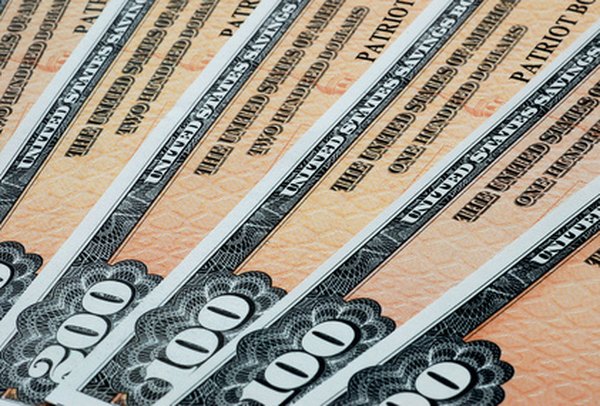What Is HH Bond vs. EE Bond?
Electronic savings bonds are replacing the paper ones.
savings bonds image by Stephen VanHorn from Fotolia.com
HH and EE savings bonds are both conservative investments, fully backed by the U.S. Government. The Treasury has offered various types and denominations of bonds over time, transitioning from paper to electronic bonds in recent years. You can no longer buy the older HH bonds, but EE bonds are available online. Despite some similarities, HH and EE bonds differ in their methods of interest payment, means of redemption and tax requirements.
Acquiring Bonds
The Treasury stopped issuing HH savings bonds on September 1, 2004. Investors originally received the bonds only in exchange for H bonds, E or EE bonds. You can purchase new electronic EE bonds online by opening a Treasury Direct account. Before Jan. 1, 2012, the Treasury sold EE bonds in paper form, but these are no longer for sale.
Denominations
HH bonds came in paper form in $500, $1,000, $5,000 and $10,000 denominations. The Treasury sold them for face value, meaning you paid $500 for a $500 bond, with no purchase limit. You purchase electronic EE bonds at face value in any amount of $25 or greater, up to a maximum yearly amount of $10,000.
Interest
HH bonds pay out current interest every six months at a rate determined when you buy them. On the 10th anniversary of the bond, the interest rate resets to the current HH rate, and the bonds continue to pay for 10 more years. EE bonds dated May 2005 or later also earn a fixed interest rate. This rate changes for new bonds on May 1 and Nov. 1 of each year. The bonds earn until full maturity at 30 years, but you receive the interest only when you redeem them.
Redeeming Bonds
Redeem HH bonds through your bank, which must certify your signature and forward the bonds to a Treasury Retail Securities Site. Sign up for Treasury direct deposit using Form PDF 5396 to receive your money. You must wait until 12 months after purchase to cash EE bonds, and you forfeit three months' interest if you don't wait five years. Redeem paper bonds directly at many financial institutions. To cash more than $1,000 at once, have the bank certify your signature and forward the bonds to a Treasury Retail Securities Site. Redeem electronic EE bonds quickly online at Treasury Direct to receive a bank account credit in one business day.
Federal Income Taxes
Savings bond interest is subject to federal, but not state, income taxes. You must report the interest on HH bonds for the year it was earned. If you received the bonds in trade for older bonds with deferred interest, you must report that interest also when you redeem HH bonds. You can choose to defer reporting all EE bond interest until you cash them. Alternately, you can choose to report each year's interest on your taxes for that year. Find the amount of accrued interest on you EE bonds online in your Treasury Direct account.
References
- Treasury Direct: HH/H Savings Bonds
- Treasury Direct: EE Savings Bonds in Depth
- Treasury Direct: Treasury to End Over-the-Counter Sales of Paper U.S. Savings Bonds
- Treasury Direct: EE/E Savings Bonds Rates & Terms
- Treasury Direct: SeriesHH/H Savings bonds Rates & Terms
- Treasury Direct: Redeem Series HH Savings Bonds
- Treasury Direct: Redeem EE/E Savings Bonds and Savings Notes
- Treasury Direct: Series EE/E Savings Bonds Tax Considerations
Resources

